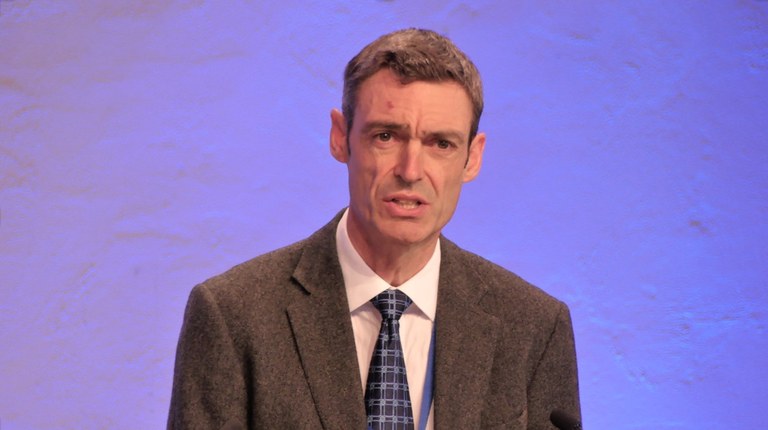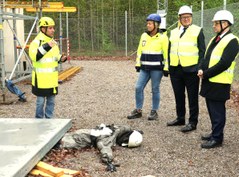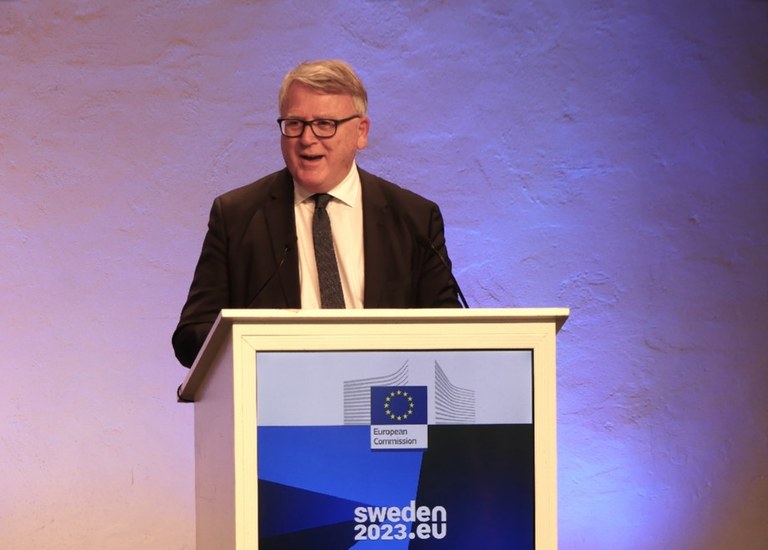Mental and social health issues focus during work environment conference
The number of work-related deaths in the EU fell by 57 per cent between 1998 and 2019. But the positive development has flatlined in the past four years. New vigorous action is needed to make a vision zero strategy for work-related deaths a reality.
The number of work-related deaths in the EU fell by 57 per cent between 1998 and 2019. But the positive development has flatlined in the past four years. New vigorous action is needed to make a vision zero strategy for work-related deaths a reality.
The Swedish EU Presidency and the EU Commission therefore hosted the Occupational Safety and Health Summit on 15 and 16 May.
300 politicians and civil servants from all of the member states, EU institutions and work environment experts came to Stockholm to take stock of the EU strategic framework on health and safety at work.
The European Agency for Safety and Health at Work, EU-OSHA, presented its report “Occupational safety and health in Europe: state and trends 2023” on the opening day. EU-OSHA is headquartered in Bilbao in Spain and led by William Cockburn.

William Cockburn leads the European Agency for Safety and Health at Work.
“It shows that although great progress has been achieved, the development has stagnated,” Cockburn said.
The fact that just over 3,300 people died in workplace accidents in 2022 might not sound like a huge number in light of the fact that there are 170 million people in work in the EU. But most work-related deaths happen in slow-motion, as Michael Gillen put it. He is the senior occupational health and safety policy executive at the Irish employers’ organisation Ibex.
More than 200,000 people die from work-related illnesses every year, and more than 3.1 million accidents lead to more than four days of sick leave. Exposure to asbestos remains one of the major causes of death, even though the EU banned the use of asbestos in 1991.
Early exposure to asbestos still results in around 88,000 deaths in Europe every year and represents 55 to 85 per cent of cases of lung cancer developed at work. Europe’s green transition also means there is now a wave of renovations of older buildings containing asbestos, which must be handled safely.
The EU Commission, European Council and EU Parliament are in final negotiations to agree on how much to lower the exposure limit value for asbestos as well as a range of chemicals.

A full house at Stockholm's Münchenbryggeriet as EU Commissioner Nicolas Schmit and others spoke.
Factors such as de-industrialisation contributed to some of the reduction of work-related deaths prior to 2019. The lowest-hanging fruit was picked first since much of the focus was on bigger companies. Three is a clear link between the size of a company and safety awareness.
“Companies play a key role in handling health and safety at work. The first thing I often see when visiting a company is a sign which shows how long it has been since the last serious accident,” said European Commissioner for Jobs and Social Rights Nicolas Schmit.
“I have never seen – and studies will show this – a competitive, modern and innovative company with a high number of accidents and health problems among their workers. In order to be competitive, modern and innovative you have to look after your employees and health and safety must be a top priority in the social dialogue,” he pointed out.
Nicolas Schmit, European Commissioner for Jobs and Social Rights.
“If you look at costs, beyond the human ones, they are also frightening. The latest available statistics from 2019 show work-related accidents and health issues reduced GDP by 3.3. per cent because people were injured and ill. That is a cost of 460 billion euro which we cannot afford.”
But it is considerably harder to get information out to and check on small businesses. Different initiatives aimed at getting information to smaller businesses and tools to handle these issues were presented during the conference – see fact box.
The EU strategic framework on health and safety at work has a subheading: In a changing world of work.
“We have roughly half the number of employees in agriculture and a quarter fewer in industry, but service secotr jobs have experienced a 50 per cent increase since the 1990s,” said William Cockburn.
Workplace psycho-social risks were a main focus during the summit.
“The long-term consequences of not taking psycho-social risks as seriously as we take the physical risks could damage society as a whole,” said Paulina Brandberg, Sweden’s Deputy Minister of Employment.
Trying to reduce psycho-social risks is much more difficult. How do you determine what constitutes unhealthy workplaces?
“When you have a workplace accident because of a bad work environment, you can trace it back in order to see what caused it. The same does not go for the effects people suffer from a bad psycho-social work environment. If that fails, it grinds a person down over time and it can take years before the effects on the individual become apparent. That is why these things need to be taken more seriously,” Paulina Brandberg tells the Nordic Labour Journal.
What can be done?
“Firstly, we need to remove the stigma around mental health so that more people dare to talk about how they feel at work. Nobody should be afraid that this might impact their career opportunities.
“Secondly, we must systematically map work environments to discover mental health issues. The Work Environment Agency plays an important part here.
“Finally, we must make use of the tools we already have access to. There are several research-based tools in this area, but employers need the right information before they can start using them,” says Paulina Brandberg.
- Panel debate
-
Nicolas Schmit, EU Commissioner for Jobs and Social Rights, Paulina Brandberg, Minister for Gender Equality and Deputy Minister of Employment in Sweden, and Claes-Mikael Ståhl, Deputy General Secretary of the European Trade Union Congress (ETUC), who was so pleased with the conference that he wanted more:
"We should make it a tradition to meet every second year," he said.
- From accountant to yoga instructor – what are the work environment risks?
-
All employers are required to risk assess their work activities and identify, ‘so far as is reasonably foreseeable’, all hazards that can cause accidents or ill health.
This can be challenging because risks vary a lot between different types of businesses.
BeSMART is an interactive web-based tool made in Ireland that is designed to allow SMEs to comply with these legal requirements by producing and recording OSH risk assessments.
BeSMART was developed in 2010 and until now it has reached over a quarter of all Irish SMEs, with approximately 43,000 registered users. By logging in, the companies can see what applies to their own business.
- Safety Park for all senses
-

To reduce construction site risks, the Safety Park focuses on several senses. That is why you could witness dancing EU politicians and a Swedish labour minister trying out what it feels like being blind, as participants from the EU work environment conference came to visit.

 Follow us on Facebook
Follow us on Facebook
